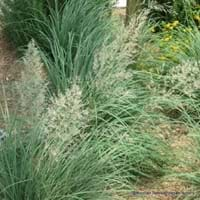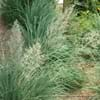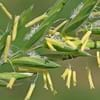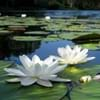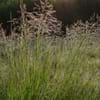Life Span
Perennial
Perennial
Type
Grass
Flowering Plants, Fruits, Trees
Origin
North America, United States, Southwestern United States, Texas, Mexico
Central America, Europe, North America
Types
Foxtail muhly, Devils Canyon muhly, alkali muhly
Not Available
Habitat
High elevation, Hillside, Slopes
Hedge, Scrubs, Woods
USDA Hardiness Zone
7-10
4-8
AHS Heat Zone
12 - 7
Not Available
Sunset Zone
Not Available
Not Available
Habit
Clump-Forming
Not Available
Flower Color
Pink, Purple, White
White
Flower Color Modifier
Bicolor
Not Available
Fruit Color
Brown, White
Yellow
Leaf Color in Spring
Light Green, Blue Green
Dark Green
Leaf Color in Summer
Light Green
Green
Leaf Color in Fall
Blue Green, Gray Green
Brown, Green, Light Yellow
Leaf Color in Winter
Blue Green, Gray Green, Tan
Not Available
Leaf Shape
Grass like
Oblong
Plant Season
Summer, Fall, Winter
Summer
Sunlight
Full Sun, Partial Sun, Partial shade
Full Sun, Partial shade
Growth Rate
Medium
Medium
Type of Soil
Clay, Loam, Sand
Loamy
The pH of Soil
Acidic, Neutral
Neutral
Soil Drainage
Well drained
Well drained
Bloom Time
Early Fall, Fall
Fall, Summer
Tolerances
Drought
Drought
Where to Plant?
Container, Ground, Pot
Ground
How to Plant?
Divison, Seedlings
Grafting, Seedlings, Transplanting
Plant Maintenance
Medium
Medium
Watering Requirements
Needs less watering, Water every 3 weeks until the root ball is wet
Medium
In Summer
Lots of watering
Lots of watering
In Spring
Moderate
Moderate
In Winter
Average Water
Average Water
Soil pH
Acidic, Neutral
Neutral
Soil Type
Clay, Loam, Sand
Loamy
Soil Drainage Capacity
Well drained
Well drained
Sun Exposure
Full Sun, Partial Sun, Partial shade
Full Sun, Partial shade
Pruning
Grass Cuttting and pruning up to 5cm, Prune in early spring, Remove damaged leaves, Remove dead branches, Remove dead leaves
Prune when plant is dormant, Remove dead or diseased plant parts
Fertilizers
All-Purpose Liquid Fertilizer, EDTA iron
All-Purpose Liquid Fertilizer
Pests and Diseases
Red blotch
Aphids, Curculio occidentis, Japanese Beetles, Leaf Rollers, Leafminer, Mites, Red blotch, sawflies, Scale, Stink bugs
Plant Tolerance
Drought
Drought
Flower Petal Number
Single
Single
Foliage Texture
Fine
Medium
Foliage Sheen
Matte
Matte
Attracts
Bees, Butterflies
Not Available
Allergy
Pollen
Digestive Problems, Respiratory problems
Aesthetic Uses
Ground Cover
Showy Purposes
Beauty Benefits
Not Available
Beautiful Skin
Environmental Uses
Air purification, soil erosion prevension on hill slopes, Wildlife
Food for birds
Medicinal Uses
Not Available
Anthelmintic, Antibacterial, Astringent, Hypnotic, Laxative, Refrigerant
Part of Plant Used
Not Available
Fruits
Other Uses
Used as Ornamental plant
Edible syrup, Jam, Jelly, Used As Food
Used As Indoor Plant
No
No
Used As Outdoor Plant
Yes
Yes
Garden Design
Dried Flower/Everlasting, Foundation, Groundcover, Mixed Border, Rock Garden / Wall
Not Available
Botanical Name
MUHLENBERGIA emersleyi
Malus sylvestris
Common Name
Bull Grass
European crab apple
In Hindi
Bull Grass
european crab apple
In German
Bull Grass
Der Holzapfel, Europäischer Wildapfel
In French
Bull Herbe
Le Boquettier, le Pommier sauvage ou Pommier des bois
In Spanish
Bull Hierba
Malus sylvestris, el Manzano silvestre, manzano silvestre europeo
In Greek
Δελτίο Grass
Ευρωπαϊκή μήλο καβουριών
In Portuguese
touro grama
Malus sylvestris
In Polish
Bull Trawa
Jabłoń dzika
In Latin
Bull Grass
european crab apple
Phylum
Magnoliophyta
Magnoliophyta
Class
Liliopsida
Magnoliopsida
Clade
Angiosperms, Commelinids, Monocots
Angiosperms, Eudicots, Rosids
Tribe
Eragrostideae
Not Available
Subfamily
Chloridoideae
Not Available
Number of Species
Not Available
Importance of Bull Grass and European Crab Apple
Want to have the most appropriate plant for your garden? You might want to know the importance of Bull Grass and European Crab Apple. Basically, these two plants vary in many aspects. Compare Bull Grass and European Crab Apple as they differ in many characteristics such as their life, care, benefits, facts, etc. Every gardener must at least have the slightest clue about the plants he wants to plant in his garden. Compare their benefits, which differ in many ways like facts and uses. The medicinal use of Bull Grass is Not Available whereas of European Crab Apple is Anthelmintic, Antibacterial, Astringent, Hypnotic, Laxative and Refrigerant. Bull Grass has beauty benefits as follows: Not Available while European Crab Apple has beauty benefits as follows: Not Available.
Compare Facts of Bull Grass vs European Crab Apple
How to choose the best garden plant for your garden depending upon its facts? Here garden plant comparison will help you to solve this query. Compare the facts of Bull Grass vs European Crab Apple and know which one to choose. As garden plants have benefits and other uses, allergy is also a major drawback of plants for some people. Allergic reactions of Bull Grass are Pollen whereas of European Crab Apple have Digestive Problems and Respiratory problems respectively. Having a fruit bearing plant in your garden can be a plus point of your garden. Bull Grass has showy fruits and European Crab Apple has showy fruits. Also Bull Grass is not flowering and European Crab Apple is flowering. You can compare Bull Grass and European Crab Apple facts and facts of other plants too.
